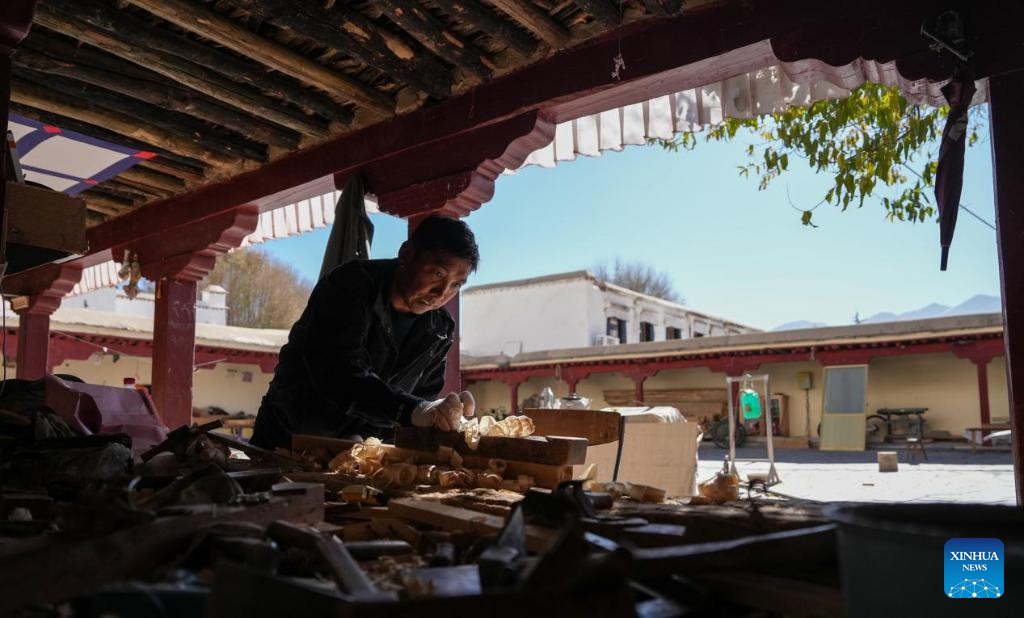
A craftsman from the maintenance unit of the Potala Palace's management office processes wooden parts needed in refurbishment of the palace in Lhasa, southwest China's Xizang Autonomous Region, Dec. 4, 2024. (Xinhua/Jigme Dorje)
LHASA, Dec. 24 (Xinhua) -- In the early winter, just after the annual exterior wall painting project for the Potala Palace was completed, Tashi and his fellows, carrying paint buckets, carefully brushed fresh paint onto the palace's wooden window frames.
Tashi, 49, is a craftsman from the maintenance unit of the Potala Palace's management office.
Perched atop Mount Marpori in central Lhasa, the capital of southwest China's Xizang Autonomous Region, the Potala Palace was built by Tibetan King Songtsen Gampo in the seventh century and expanded in the 17th century.
The palace, a typical Tibetan traditional earth-stone-wood structure with more than 1,200 rooms, was inscribed on the UNESCO World Heritage List in 1994 -- the same year the maintenance team was established.
The team was later developed into a department, with the crew growing from 12 to more than 60 members. Composed of carpenters, stonemasons, tailors, painters and others, the team has made massive contributions to the preservation of the palace.
Tashi was first hired as an electrician apprentice at the palace in 1993 before becoming one of the first members of the maintenance team.
"At that time, the palace covered a total land area of 400,000 square meters and was like a maze for us," he recalled, adding that the team would go wherever repairs were needed.
They learned various restoration skills while assisting experienced craftsmen. The learning process included helping carpenters replace wooden parts, assisting stonemasons with wall repairs and working high above the ground to paint exterior walls.
In winter and summer, the maintenance department sends carpenters and stonemasons to inspect the safety of the main structure.
"For example, if we have recorded insect holes on a wooden part that was treated half a year ago, we would need to check for any new holes. If necessary, we promptly carry out repairs or replacements," said Tashi.
During their repairs, the craftsmen have to minimize intervention while preserving the integrity and authenticity of the architecture and the precious cultural relics inside.
"We must use the best materials and craftsmanship techniques and maintain the highest restoration standards," said Donden Tsering, 63, a carpenter who has worked for the palace for 40 years.
While inspecting the underground structures, the team even discovered dozens of new, previously unknown spaces in the palace.
The discovery has provided a more comprehensive understanding of the palace's underground architectural supports, which greatly contributed to the second major restoration project.
Over the past 30 years, the Chinese government has poured nearly 800 million yuan into projects including repairs on the palace's main structure, restoration of the golden roof, structural monitoring, preservation and utilization of ancient books and documents, as well as an online ticketing system, according to its management office.
"The Potala Palace was built by our ancestors generation after generation. I hope we can contribute to the longer-term health of the palace," said Donden Tsering. ■

Tashi, a craftsman from the maintenance unit of the Potala Palace's management office, performs a routine checkup at the palace in Lhasa, southwest China's Xizang Autonomous Region, Dec. 4, 2024. (Xinhua/Jigme Dorje)







